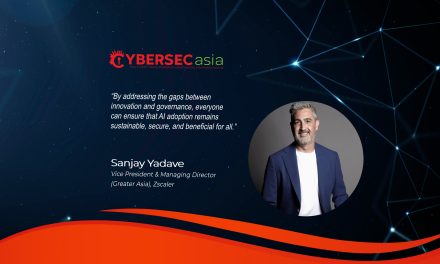While the pandemic has loosened its grip on the world, geopolitical factors and economic uncertainty have continued to influence how organizations conduct business.
The pandemic has forced many businesses to rethink the way they operate, with one of the biggest changes being the implementation of hybrid work.
In a report conducted in partnership with the London School of Economics, Vodafone found that 50% of respondents want the freedom and autonomy to work in ways that best suit them.
The pivot to the hybrid work model necessitated the emphasis on productivity to ensure business continuity. However, this often came at the expense of security as many cybersecurity policies were built for the office and certainly not for organization-wide work-from-home arrangements.
According to IBM data, Asia was hit by the most cyber-attacks in 2021, accounting for one in four globally.
People-centric security

Pre-COVID cybersecurity was highly centralized, where firewalls within the office networks kept out intruders and non-authorized access. However, the need to deploy work-from-home applications and tools quickly has made it challenging for IT teams to secure these connections. That’s not all though; more employees are also sharing data and information with contractors, partners and suppliers.
These employees are using their own devices to access company data, with Trend Micro reporting that 39% of employees use their personal devices to do so. Each of these devices are access points that provide cybercriminals with potential avenues to strike.
Security teams can look to implement various measures to shore up security. These include requiring employees to use multifactor authentication (MFA) to access company data and applications. Mandating the use of MFA will help security teams ensure that any deployed virtualized desktop applications are secure, an approach that will likely remain as employees continue working from home.
Aside from coming up with technology-based solutions to handle security, organizations must adopt a people-centric approach to cybersecurity as the definition of an “office” changes. Some organizations have chosen to go with a zero trust architecture, which requires staff to authenticate themselves and receive authorization to access company data regardless of whether they are working in the office or remotely.
A zero trust approach allows a organizations to restrict access depending on a user’s needs – employees only get access to information they need and nothing more. This reduces the probability of having data and assets being unwittingly exposed or leaked.
Staff must also be educated on being mindful of their IT habits when working outside the office. Encouraging safe IT habits and behaviors when working remotely can go a long way towards preventing cyberattacks. Increasing awareness of scams and phishing attacks will prevent employees from falling prey to such schemes.
Networks: a critical piece of the security puzzle
Hybrid work is here to stay so organizations must consider a holistic approach, one where their networks and cybersecurity solutions work together to ensure improved productivity and security. While it is common to consider endpoint security as the silver bullet for security challenges, it is crucial to avoid overlooking the importance of the underlying network architecture.
Aside from hybrid work, cloud deployments are also gaining in popularity. This means less data is stored on-premise and that network stability and speed is critical in helping organizations manage their security as more of their data and information is going through public clouds.
While organizations may mistakenly believe that running applications and transferring data on the cloud will lead to a loss of control and visibility over their network, this cannot be further from the truth. Working with cloud security providers to deliver cybersecurity solutions locally through SD-WAN without having to deploy these solutions at every individual location.
The centralized traffic management and security controls of SD-WAN allows organizations to control security policies centrally and deployed throughout the entire organization. This ensures secure connections no matter where an organization’s employees are located. This simplifies the security for IT teams as well as they can enjoy the convenience of monitoring traffic using a single console.
This security does not need to come at the expense of productivity though; users can connect locally and experience fast Internet speeds as opposed to having slow traffic speed due to their traffic being routed through a central or regional data center. Often overlooked, networks form the bedrock of a secure and stable infrastructure and when combined with suitable cybersecurity tools, create a unified solution that encourages innovation and growth.

















